Updated on 24th February 2022.
Growth hacking is a data-driven practice that combines a variety of clever marketing tactics. With limited marketing resources, entrepreneurs have to think of new and creative ways to expand their firms rapidly and at a low cost.
The goal of growth hacking strategies is generally to acquire as many users or customers as possible while spending as little as possible. The term “growth hacking” was coined by Sean Ellis, founder and CEO of GrowthHackers, in 2010.
Growth Hacking In Definition
While growth hacking is a hot topic in marketing, there aren't many recommendations available to advise marketers on how to use it to develop their businesses. Growth hacking is the practice of using unusual marketing methods to break through, develop more quickly, and remain ahead of the competition.
Who Is A Growth Hacker?
A growth hacker is a term for someone who implements growth hacking strategies. A growth hacker is someone who helps startups and businesses obtain and retain customers by employing innovative, low-cost tactics. Growth hackers are sometimes referred to as growth marketers, although they are not merely marketers. A growth hacker can be anyone who works on a product or service, including product managers and engineers.
Growth hackers are obsessive, inquisitive, and analytical by nature:
- Growth hackers are only concerned with corporate expansion tactics.
- They come up with hypotheses, prioritise them, and put them to the test.
- They investigate and test to find what works.
- The perfect growth hacker knows how to prioritise growth, discover client acquisition channels, track progress, and scale growth.
The origins of growth hackers can be traced back to programming engineers. They are, however, much more. They are also data analysts, product managers, and creative marketers. They have one aim in mind: to figure out how to expand a company in the most effective and efficient way possible. This often involves rapid experimentation across marketing channels, constant attention to product (re)development and an unending focus on building and engaging a company’s user base.
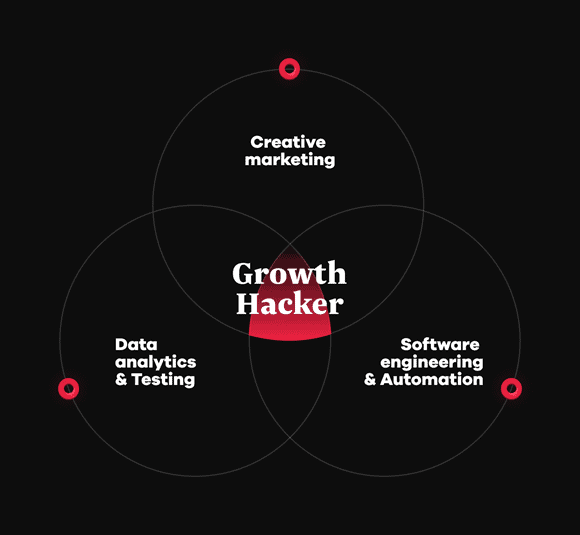
Growth hackers can employ a variety of techniques to achieve their objectives, including viral marketing, social media, targeted advertising, reverse engineering, SEO, e-mail marketing, content marketing, analytics, A/B testing, conversion rate optimization, and more. The most crucial thing to remember is that every decision a growth hacker takes is based on facts. A growth hacker understands how to measure and what to measure. To learn about their target clients' habits and behaviour, they use analytics, landing pages, and A/B testing.
Four-Step Guide To Growth Hacking
Your business model patterns must be the foundation of your growth hacking tactics; otherwise, you won't be able to deploy excellent client acquisition strategies. The following 4 fundamentals to growth hacking is a framework created by Ehsan Jahandarpour, a Forbes Top 20 Growth Hacker, Startup Coach and Entrepreneur
Innovative Business Model
The first stage in the growth hacking method is to develop a customer acquisition plan, which will assist you in developing a lean and growth-driven business model. This is the portion that over 96% of growth strategists overlook. A robust growth-driven business model has nine building pieces, at least one business pattern or supercharger, and a succession of growth tactics on top of that.
When it comes to growth strategy marketing, three elements must be prioritised: Differentiating your Value Proposition is the first step. In layman's terms, "what are you offering your clients to solve their problems" that your competitors aren't? Finally, the customer relationships block connects all growth hacking strategies to these two blocks and boosts your revenue.
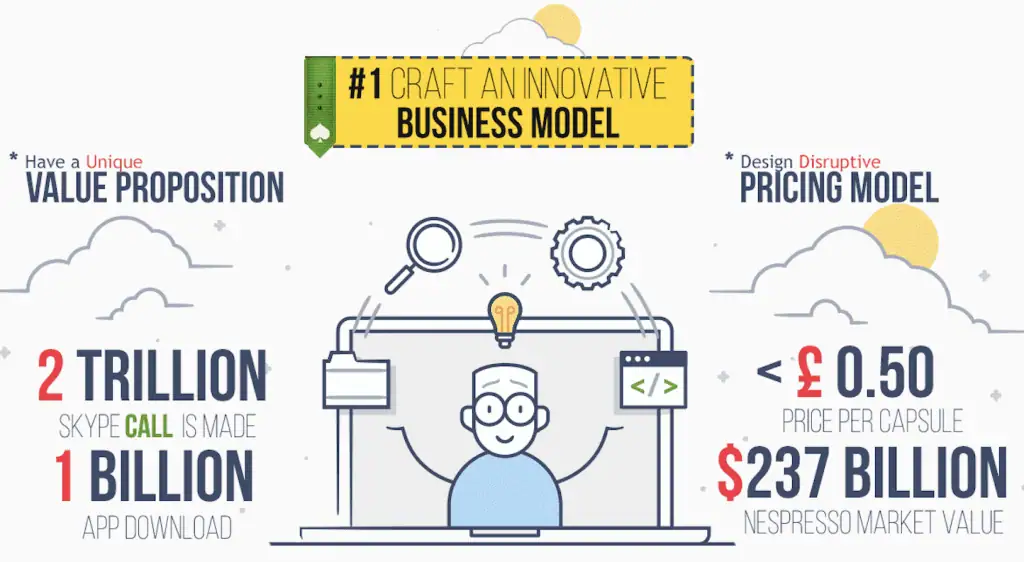
The first thing to remember is that your prospects and customers have some issues, and challenges and they are looking for a solution. So whatever you are offering should address a valid problem, otherwise, you’re going to be out of business, soon. As shown in the infographic, Skype and Nespresso have both managed to grow their business on top of a successful business model.
Attracting Customers
The next thing you should do is to attract people to your business. Create a gamification procedure when you offer a giveaway to entice people to share it on social media, blogs, or with their friends. That way, you're generating interest for free. Link building or creating backlinks would be the next expansion strategy. You may build high-quality backlinks by following the growth hacking approach and these procedures. Analyze the current situation and come up with a catchy yet related topic.
Google Trends and Buzzsumo are the greatest tools for tracking and following trends. After you've finished your material, just utilise a personalised script to send it to your market boosters [those with the power to help you grow your business], such as other bloggers and journalists. The key is to avoid pushing and selling. Be astute and cultivate relationships. Results produced from these backlinks aren't created overnight.
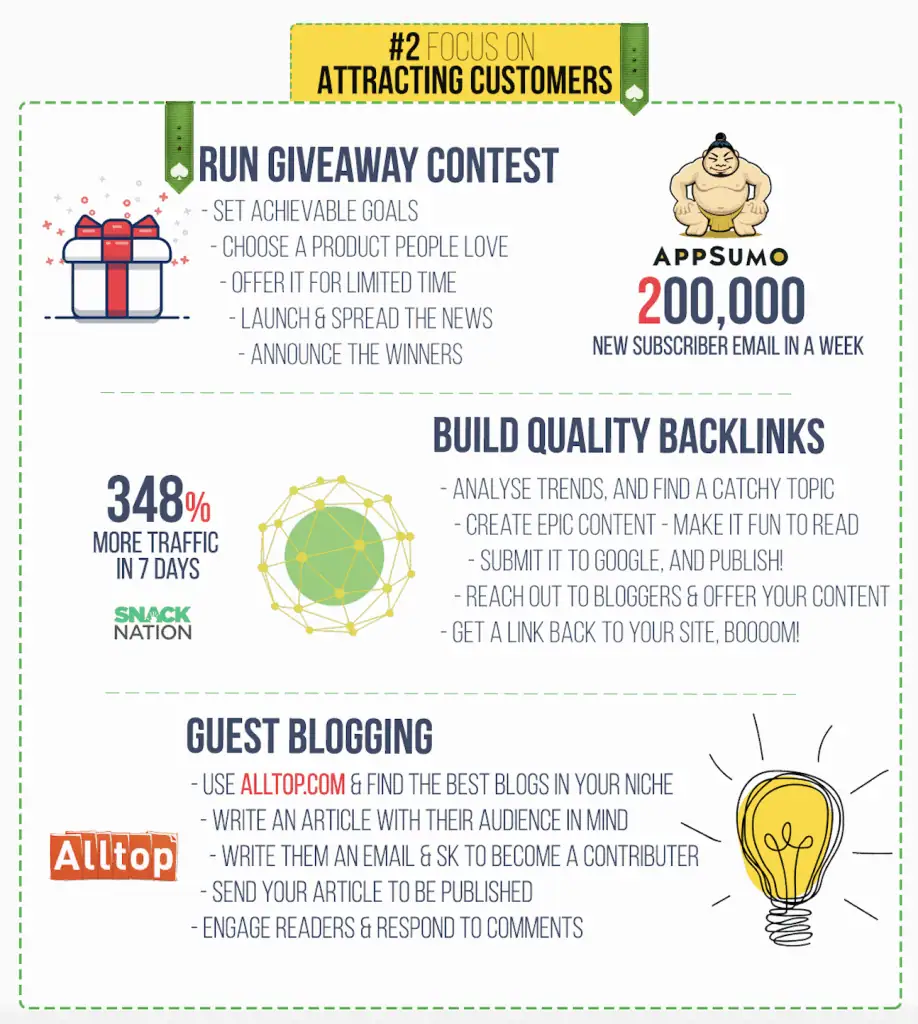
Once you’re done with those steps, the next step is to engage your audience.
Activate and Engage Customers
Once you've completed those processes, it's time to engage your audience [which includes both current and potential clients]. Customers can be engaged in a variety of methods, including social media, email marketing, guest blogging, and so on. This way, you are increasing awareness for those who are new to your business, and also you are activating those who have not taken any action to make a purchase from you.
According to Ehsan, if you want to engage your customers through email marketing, you can boost your success rate by 28% if you include a Call-To-Action (CTA) in your message. A critical stage that you must always remember is that as a growth hacker it is your responsibility to continuously monitor your results and optimize your pages for a higher growth rate.
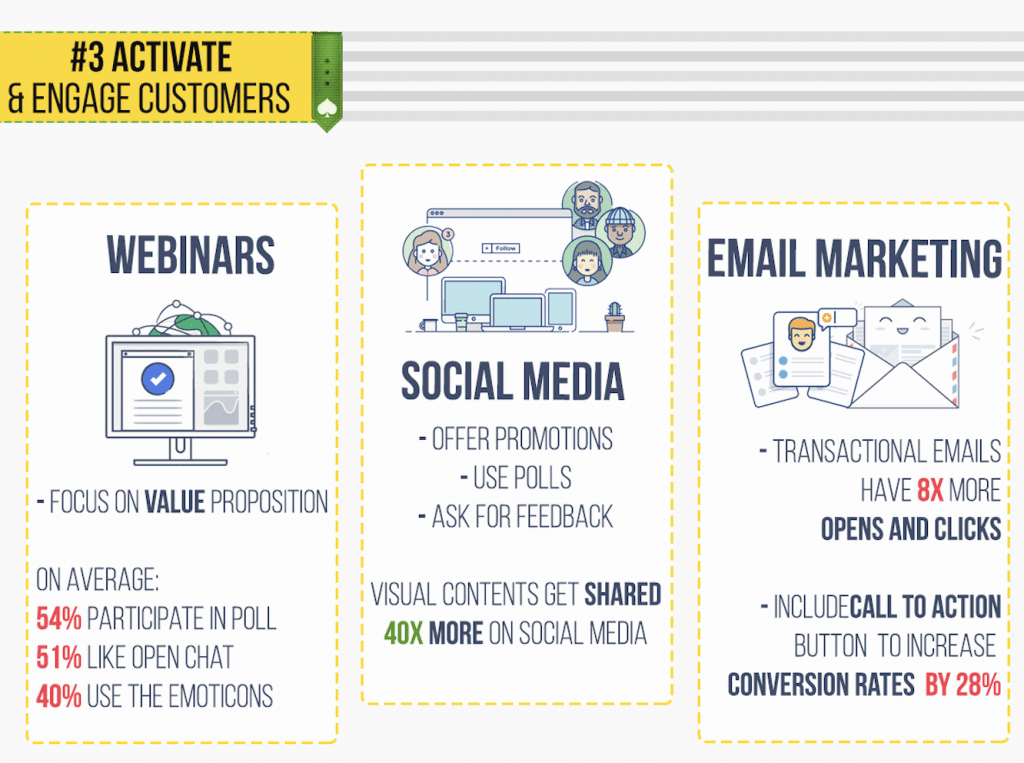
It might range from improving your Click Through Rate (CTR) by utilising better headings for your content, catchy content for email marketing newsletters (yet avoiding to spam your subscribers at the same time), better servers and loading time for your website or social platforms. These tactics carefully planned and combined together will help you increase your conversion rate and engage with your clients on your site/social platforms in a more meaningful way.
You should focus on customer’s behaviour and test everything to see what is more appealing to them.
Test, Adjust and Improve
Based on feedback from your customers, there is always room to improvise your existing strategies and improve them for better customer optimisation. The following may be some pointers that could be adjusted
- Which button leads to what page on your website and is that really what the customer wants?
- What is the style of your menu? Does it display all options of your products/services clearly
- Popup or form? Are they visible enough and at the same time not distracting or an issue for the customer
- Margins on the page. Do they make the customer feel welcome to the webisite or boxed in?
Or anything else that boosts your conversion rate on a regular basis should be optimised. Because it all comes down to how you want to expand your business and how creative you want to be in applying those growth tactics, the realm of growth hacking techniques and growth strategies is limitless.
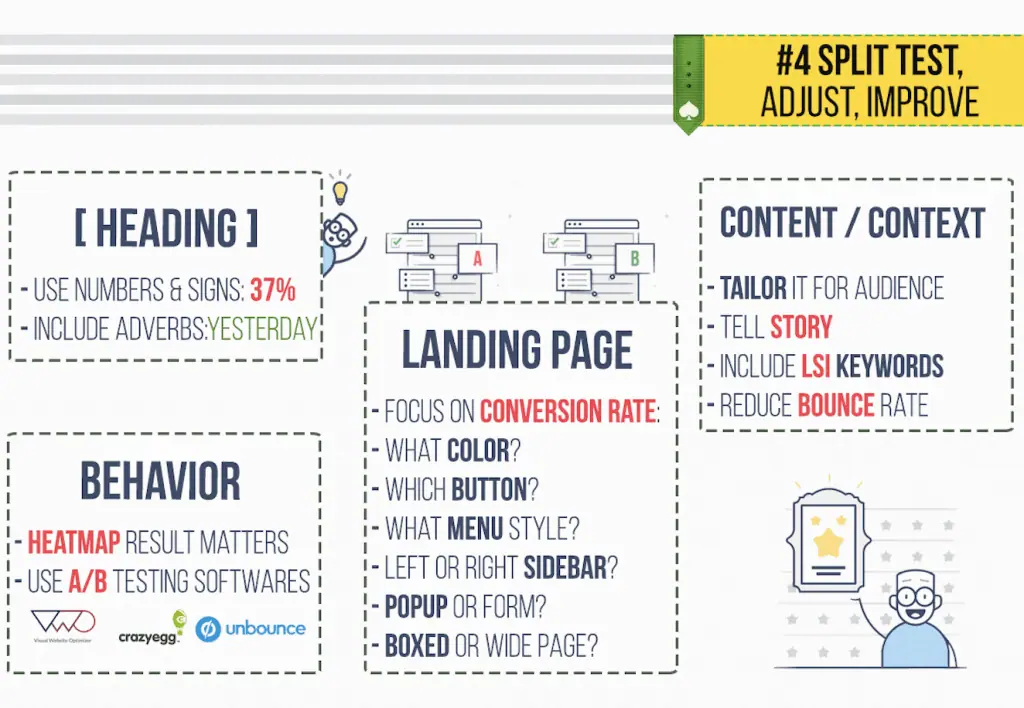
Growth Hacking Strategies
The majority of growth hacking tactics fall into one of three categories:
- Advertising
- Product Marketing
- Content Marketing
In terms of cost comparison, content marketing is alternatively a low-cost option amongst others. This can be done via the following methods: starting a blog and creating valuable and shareable content, creating social media content, podcasting, running webinars, running contests and giveaways, getting bloggers and influencers to review your product, joining relevant forums, groups and subreddits, using email marketing to build a stronger connection with users and improving content visibility with SEO strategies.
Product marketing includes techniques for making your product more appealing and building a strong customer and user base. They include: gamifying and rewarding the user onboarding process to make it more enjoyable, affiliate marketing tactics that will also leverage content marketing growth strategies and will offer rewards for recommendations that benefit both the referrer and the new user and lastly to market their business, growth hackers can employ social media and pay-per-click (PPC) advertising.
Growth Hacking vs. Traditional Marketing
Even if growth hacking and marketing appear to be similar at first glance, there are some key differences summarized below.
Traditional marketer: Someone who aims to sell particular goods and services to their target group.
Growth hacker: “A person whose true north is growth.” - Sean Ellis
| Traditional Marketers | Growth Hackers |
| Typically receive a product from a development team and then are tasked with developing a market for it. | They get involved in product development and they work to constantly improve the product over time according to the results of their tests. |
| They aim for high awareness and higher acquisition. They create the market and bring in the customers. | They are concerned with customer's lifetime value. |
| They tend to base decisions on textbook theories and frameworks that have already been tested and somewhat proven | They use a data-driven approach to everything they do. This means there is no room for assumption. |
| They are accustomed to rolling out high exposure, high-cost campaigns on billboards, front-page ads, and prime time media spaces. | They are always on the lookout for small but powerful “hacks”: unconventional “tricks” or “shortcuts” with high potential and low costs |
| Marketers try to sell a finished product. | Growth hackers help to design a product based on what customers are asking for. |
Growth Hacking Tools
Companies have implemented and made use of some of the best growth marketing tools out there. Summarized below are some of the most used services to aid in growth hacking.
Mailchimp
If you're a budget-conscious company – and what company isn't? — Mailchimp should be on your list of growth hacking tools. For starters, it's free for up to 2,000 subscribers or 12,000 emails every month, which is plenty for a beginner. Mailchimp also has a great email creation wizard, lots of templates, and even email workflows to help you get started. Plus, there’s a wealth of information in their knowledge base.

OptinMonster Exit-Intent®
OptinMonster Exit-Intent® has many features that make it a great all-around tool for growth hacking marketing. Exit-intent® technology is a type of behavioural technology that records and analyses website users' movements and detects when they're about to leave without making a purchase or giving their information. Its goal is to prevent cart abandonment and increase lead generation.

Google Analytics
Knowing what works for your present consumers is a great technique if you want to activate new customers. That's where analytics tools come in, and one of the most popular is Google Analytics. That's not just because it's free; you can also obtain detailed information on your visitors, their activity, and conversions to help you expand your business.

Google Analytics can assist you in deciphering user flow and identifying and removing bottlenecks that restrict visitors from getting the most out of your product or service.
On A Final Note
As new hacks and approaches are uncovered, the world of growth hacking continues to evolve. Many major corporations have started experimenting with similar methods. Growth hacking isn't just for startups anymore. Continuous testing and optimization is the key to growth hacking success. The idea is to capture all of the lessons learned during this process so that you can apply them to future initiatives (and avoid making the same mistakes!).
The term “growth hacking” has been coined by Sean Ellis. It emerged from the startup scene in Silicon Valley. With limited marketing resources, business owners had to think of new and creative ways to develop their companies rapidly and at a low cost.






